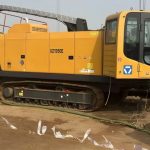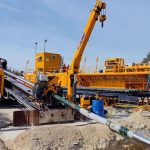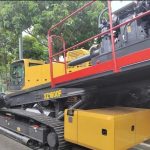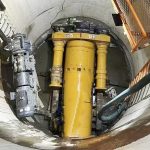Categories
Latest Updates





In trenchless construction, pipe jacking construction should be very common, and some small details of pipe jacking construction will be introduced next.
What is pipe jacking construction?
Pipe jacking construction is a non-excavation construction method. It is a pipeline burial construction technology with no or less excavation. It is an underground pipeline construction method developed after shield construction. It does not require excavation of the surface layer. , and can cross roads, railways, rivers, ground buildings, underground structures and various underground pipelines. In the pipe jacking construction, the tool pipe or the roadheader is pushed from the working well through the soil layer to the receiving well by the thrust of the main jacking oil cylinder and the inter-pipeline relay. At the same time, the pipeline following the tool pipe or the roadheader is buried between the two wells, in order to realize the construction method of laying the underground pipeline without excavation.
The commonly used pipe shapes in the construction of pipe jacking machines are generally various circular prefabricated pipes, including steel pipes, reinforced concrete pipes, various metal pipes and non-metallic pipes, etc. Square, rectangular and other non-circular prefabricated or cast-in-place pipes can also be used. reinforced concrete pipes. Pipe jacking construction is generally used for non-rock soil layers. If rock layers, aquifers or underground obstacles are encountered during construction, corresponding measures will be taken to solve them.
According to the different ways of pipe jacking machine, pipe jacking construction can be divided into tunneling pipe jacking method and extrusion pipe jacking method. The excavation pipe jacking method is divided into manual excavation pipe jacking and mechanical excavation pipe jacking according to the excavation method; the extrusion pipe jacking method is divided into two main parts: unearthed extrusion pipe jacking and unearthed extrusion pipe jacking: mainly composed of two Double acting hydraulic cylinder. Hydraulic pump station: respectively equipped with diesel engine pump station and electric motor pump station. Support plate: the function is to fix the machine and support the pit wall. Mandrel and slider: the function is to push in and drag back to expand the hole.
Pipe jacking construction should pay attention
1. When the pipe jacking machine is jacked in, the longitudinal force is transmitted between the pipe and the pipe;
2. Transmit lateral force when the direction of the pipeline is changed;
3. Tube to tube seal.
For reliable transmission of longitudinal forces, elastic gaskets are sandwiched in the pipe seams. The liner must be able to transfer the ejection force from one tube to the next, and this high retraction force can generate a pressure of 300 kg per square centimeter. In such a heel case, the gasket must be sufficiently soft to be able to compensate for the unevenness of the end face of the tube. During load transfer, the pad can and must deform plastically without stiffening. The elasticity of the gasket should be as small as possible, because the elasticity of the gasket will cause the rebound from one section of the pipe to the next section of the pipe when the jack is unloaded at the main pressure station and the medium pressure station. Part of it is lost after uninstalling.
Pipe jacking is a trenchless technique involving geotechnical, surveying and mechanical knowledge. Pipe jacking should be managed by a technical team of technicians in the professional fields of geotechnical, surveying and mechanical. The technical team conducts a detailed sub-item analysis for the overall system composed of the geological environment and mechanical equipment, and starts from the details to formulate a finer pipe jacking plan. During the jacking process, the technicians strictly follow the operating specifications and measurement and control system to operate and construct, in order to achieve success.
